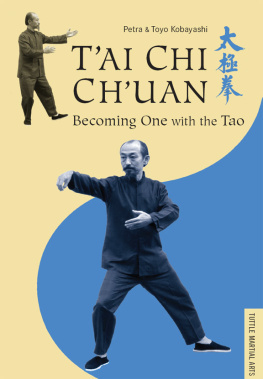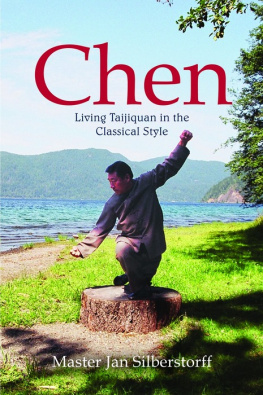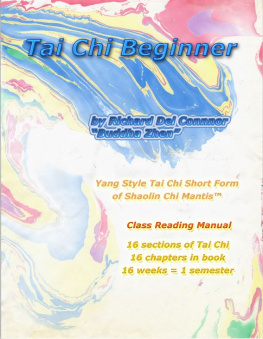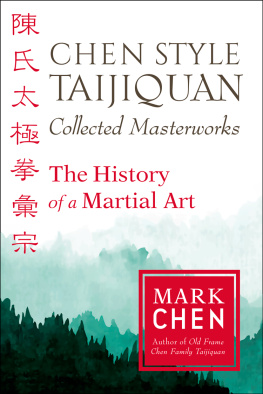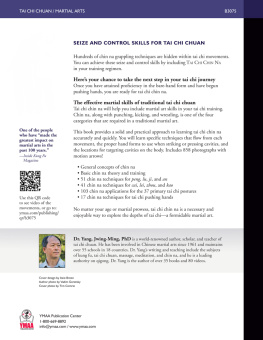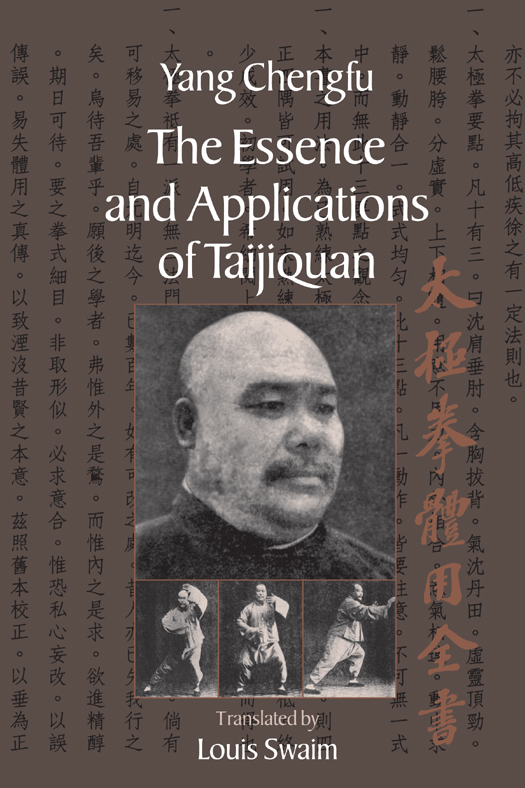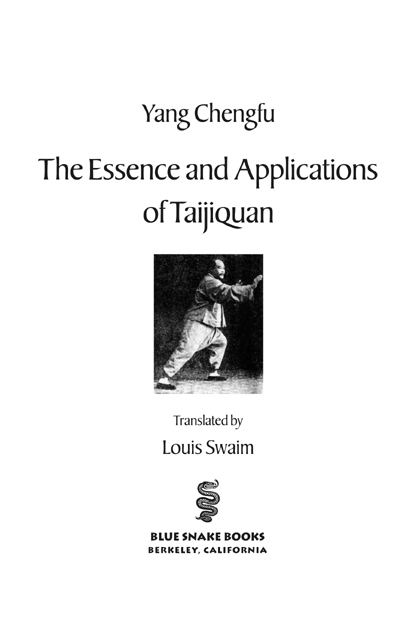Copyright 2005 by Louis Swaim. All rights reserved. No portion of this book, except for brief review, may be reproduced, stored in a retrieval system, or transmitted, in any form or by any means electronic, mechanical, photocopying, recording, or otherwise without the written permission of the publisher. For information contact Blue Snake Books c/o North Atlantic Books.
Published by
Blue Snake Books
Blue Snake Books publications are distributed by
North Atlantic Books
P.O. Box 12327, Berkeley, California 94712
Cover design by Paula Morrison
eISBN: 978-1-58394-639-8
The Essence and Applications of Taijiquan is sponsored by the Society for the Study of Native Arts and Sciences, a nonprofit educational corporation whose goals are to develop an educational and cross-cultural perspective linking various scientific, social, and artistic fields; to nurture a holistic view of arts, sciences, humanities, and healing; and to publish and distribute literature on the relationship of mind, body, and nature.
North Atlantic Books publications are available through most bookstores. For further information, visit our websites at www.northatlanticbooks.com and www.bluesnakebooks.com or call 800-733-3000.
Library of Congress Cataloging-in-Publication Data
Yang, Chengfu, 18831936.
[Taijiquan tiyong quanshu. English]
The essence and applications of taijiquan / by Yang Chengfu; translated by Louis Swaim.
p. cm.
Summary: A traditional manual on the Chinese martial art of taijiquan, based on the demonstration narrative of the eminent master, Yang Chengfu. Presents the complete Yang family form, along with interesting application scenarios Provided by publisher.
Includes bibliographical references.
1. Tai chi. I. Title.
GV504.Y32 2005
613.7148 dc22
2004027497
v3.1
This book is dedicated
to the memory of my father,
John Wesley Swaim.
Acknowledgments
M y work on this book translation began some years ago, and because of various commitments, I was only able to pursue it in spare moments over time. During that time, I benefited from many discussions with friends. Some of the people who have either encouraged me or challenged me to clarify and re-think my approach to translating include Jerry Karin, Audi Peal, Jeff Crosland, and a host of contributors to online discussions. Barbara Davis, Douglas Wile, and Jeff Crosland each read late drafts of the manuscript, and generously offered detailed suggestions for its improvement. Kathy Glass copyedited the manuscript with grace and efficiency. I, of course, am responsible for any remaining oversights or errors of interpretation.
Jess OBrien often encouraged me, and gently nudged me to complete the project, always knowing exactly what to say, and what not to say. The staff and associates of North Atlantic Books, including Jan Camp, Paula Morrison, and Yvonne Cardenas worked smoothly and professionally to carry the book through to production.
I wish to thank my mom and my sisters for the support that only family can give. My daughter Emma, with her thirst for knowledge, love of literature, and zest for life, has been a constant inspiration.
Contents
Translators Introduction
T he publication in 1934 of Yang Chengfus book, Essence and Applications of Taijiquan (Taijiquan tiyong quanshu), marked a milestone in the modern evolution of the art of taijiquan. It is the written culmination of Yangs teachings on the art. Yet, as popular as taijiquan has grown to be, few taijiquan enthusiasts in the West know anything about the contents of this seminal book. There are a number of likely reasons that this source has been overlooked for so long. For one, the book is difficult to translate, since it is written in a style that is distilled and compact a presentation that differs from speech or vernacular writing, and that includes frequent classical or literary turns of phrase that remain obscure unless the reader is familiar with, or can discover, the sources from whence they came. In addition, there are numerous problems in the features and organization of the text that cause difficulties of interpretation. Finally, there are questions about the authorship of the book that need clarification. In my approach to this book translation, I have tried to address each of these issues in a way that I hope will help the modern taijiquan enthusiast to get a grasp of Yangs valuable insights.
Early published manuals on taijiquan from the 1920s and 1930s should be understood within a greater context of a gradual evolution from oral tradition and highly codified written texts that were privately transmitted, to more explicit notation of detailed body mechanics that were publicly transmitted. The kind of detailed kinesiological description witnessed in modern manuals (written in the late 1950s and early 1960s), such as those by Fu Zhongwen or Gu Liuxin, were strongly influenced by advances in formalized The earliest taiji texts functioned less as explicit descriptions of movement than as distillations of experiential principles. They might be viewed as a sort of prompt book for advanced students and masters.
An analog in Chinese literary tradition is a body of literature known as huaben (talk book) stories. Huaben literature most likely came out of a tradition of teahouse storytellers. The storytelling art was passed down from master to student, or within a family tradition. Slowly, a written tradition developed that recorded the stories in a bare bones and formulaic presentation, whose sole purpose was to preserve the outlines of the stories and to serve as a memory prompt. Later, these prompt books were built upon and fleshed out into more narrative form by literary-minded writers for publication. Thus what had been accessible to the public only through teahouse storytellers now became available to a reading public as a sort of proto-novel.
If the classical texts of taijiquan represent subjective experience expressed through the insightful records of early masters, the later manuals represent a more objective, distanced, and analytical approach to the physical movements. Yang Chengfus Taijiquan tiyong quanshu occupies a transitional position somewhere between the earlier experiential texts and the later physical education-oriented manuals. As such, it provides a rare glimpse into the direct, hands-on teaching of the art by Yang Chengfu by means of what is best termed demonstration narrative. That is, it is a record of Yang going through the form, section by section, demonstrating the functional aspects of the art while simultaneously explaining the applications. Each section consists of a photo of Yang Chengfu in the sequenced ending posture, accompanied by a narrative describing a suggested application scenario. In most cases, the scenario begins with words such as, Suppose the opponent strikes at me with his left hand, then proceeds with the suggested application. Each posture is treated as a separate scenario. A perfunctory linkage from one section to the next is effected with introductory phrases such as From the previous posture, suppose an opponent comes from behind me. In some cases, but not all, the linkages give logical insight into the transitional moves from posture to posture. The perspective is clearly that of Yang Chengfu, perhaps demonstrating with one of his students responding to cues and striking or feinting at Yang accordingly. Once the reader understands this context of demonstration narrative, the teachings of Yang Chengfu will come across with an immediacy and liveliness unavailable before.


